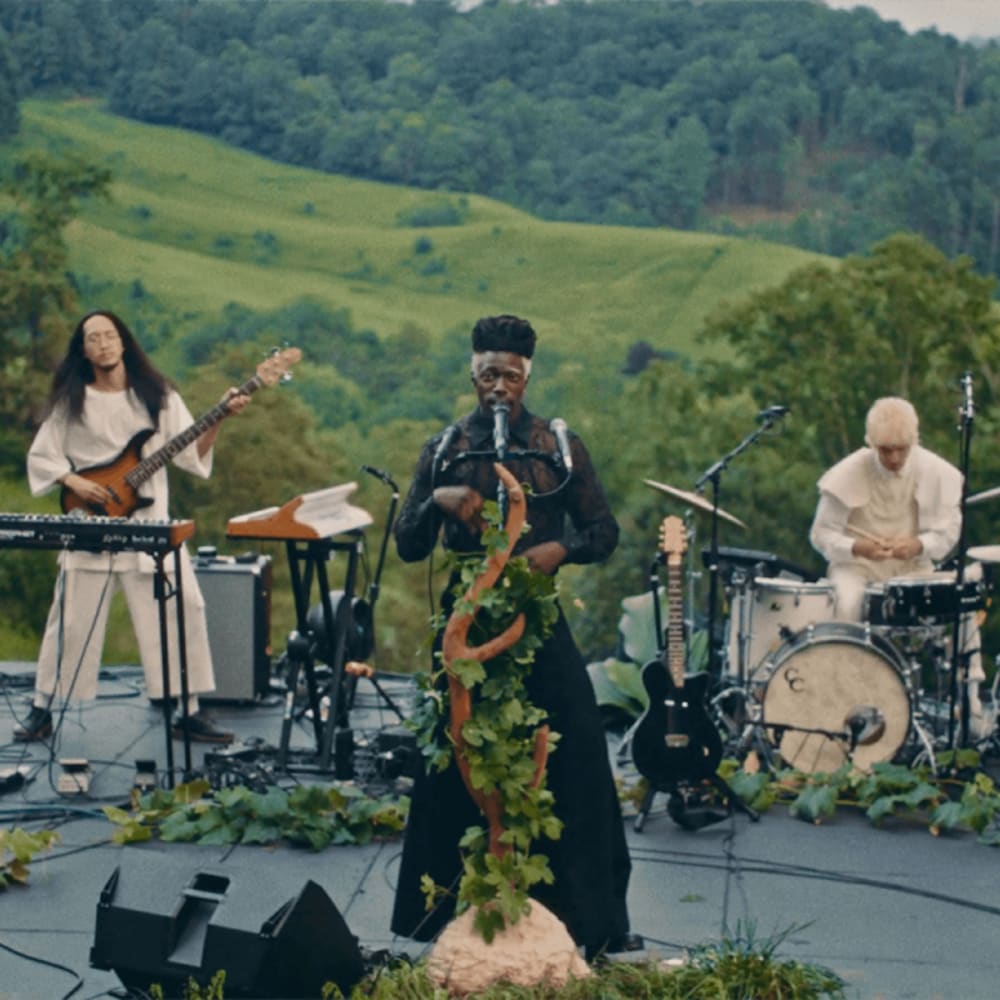Nicola Vassell is pleased to announce representation of the multidisciplinary artist Adebunmi Gbadebo. Working with paper, ceramics, sound, and film, Gbadebo explores the archival record of her family’s ancestry in Nigeria and enslavement in America. Through her research, material selection, and technical process, the artist emphasizes the prejudice of the historical record, activating her practice to restore Black subjectivity. Delving into her lineage, she discovered that her maternal family was enslaved at the True Blue plantation in Fort Motte, South Carolina. This site has become a focal point in Gbadebo’s practice, a place where she has reconnected with relatives, visited and cleaned her family’s graves, explored the fields where her ancestors grew indigo and rice, collected field recordings of the surrounding wilderness, and gathered soil, cotton, water, rice, bones, and archival data to incorporate into her art.
Gbadebo’s practice is rooted in experimentation, reimagining indigenous craft in order to abstract the “concrete” history of archival documentation and uncover ancient narratives embedded in the making of utilitarian objects. When creating paperworks, she invokes the Japanese couching technique, preparing a vat of pulp made from donated hair and raw cotton, pulverizing the natural fibers in collected water from rivers at True Blue, pouring the pulp onto a screen, and hand treating the fiber—molding it into organic forms, dyeing it with indigo, and silkscreening fragments from True Blue’s plantation archives, her family’s nineteenth and twentieth century photographs, and other primary sources. When creating ceramics, she makes her own clay by excavating dirt from burial sites at True Blue, reinforcing the earth with ball, bentonite, or red-art clay, and irrigated water from the plantation’s grounds. She employs various processes for mixing the clay, at times working the material by hand—conjuring the style of the Old Edgefield potters of South Carolina—or utilizing a clay mixer, echoing how industrialization, intended to improve working conditions, in fact made slave labor far more strenuous and dangerous. Each pot is molded using a Nigerian or Cameroonian coil method, then fired using either a gas or pit apparatus, drawing out the rusted and scorched tones of the earth at True Blue—an oxidized red patina reminiscent of West-African soil.
In all manifestations of Gbadebo’s work, there rests an object that is both a physical, informational container, and a psychic receptacle of memory, recognition, and sacrifice. Her clay and paper are infused with the precious, consecrated ground where generations of her family were buried. These materials are stained with the blood, sweat, and tears shed by her relatives as they fought for survival and livelihood, while enduring the horrors of slavery. With each vessel, she challenges both what art can hold and what it can mold, utilizing her creative vision to platform and preserve her ancestors’ voices in the present. Like the tradition of kintsugi—the Japanese art of repairing broken pottery—Gbadebo restores her family’s narrative piece by piece, highlighting the beauty of each fractured shard as she forms a more complete panorama of their singular and soulful existence.
Adebunmi Gbadebo will present new ceramics and works on paper at Independent New York 2024.
About Adebunmi Gbadebo
Adebunmi Gbadebo (b. 1992 in Livingston, New Jersey) is a multimedia artist living and working between Newark, NJ, and Philadelphia, PA. She received a BFA from the School of Visual Arts in New York and a certification in Creative Place Keeping at The New Jersey Institute of Technology. In 2023, she was the recipient of the Maxwell and Hanrahan Craft Fellowship and the Keynote speaker for the American Ceramic Circle annual conference. In 2022, she was a Pew Fellow at the Pew Center for Arts & Heritage. Gbadebo is currently an Artist in Residence at The Clay Studio and has been featured in solo exhibitions at Claire Oliver Gallery, New York, NY; New Jersey City University, Jersey City, NJ; Therese A. Maloney Gallery, College of Saint Elizabeth, Morristown, NJ; and Paul Robeson Gallery, Rutgers University, Newark, NJ. She has exhibited in group shows across the US and internationally in Africa, Europe, Asia and Australia. Her work is now on view in major exhibitions such as the 24th Sydney Biennale: Ten Thousand Suns; Minneapolis Museum of Art: Collage/Assemblage Part II: 1990-Now; and Hear Me Now: The Black Potters of Old Edgefield, South Carolina, which opened at the Metropolitan Museum of Art, New York, in 2022, and has traveled to the Museum of Fine Arts Boston, University of Michigan Museum of Art, and is now at the High Museum of Art in Atlanta until May 12, 2024.
Gbadebo’s work is in the public collections of the Smithsonian National Museum of African Art, Washington, D.C.; Smithsonian National Museum of African American History and Culture, Washington D.C.; Boston Museum of Fine Arts, Boston, MA; Minnesota Museum of American Art, St. Paul, MN; Minneapolis Institute of Art, Minneapolis MN; Weisman Museum of Art, Minneapolis, MN; Newark Museum of Art, Newark, NJ; and South Carolina State Museum, Columbia, SC. Her public commissions include an ongoing sculpture project in collaboration with students and faculty from Clemson University, SC, and the Harriet Tubman Monument (2021), Newark, NJ.
The artist has been featured in publications including the New York Times, Hyperallergic, Hypebeast, Brooklyn Rail, Forbes, The Art Newspaper, and The American Craft Council Magazine.


